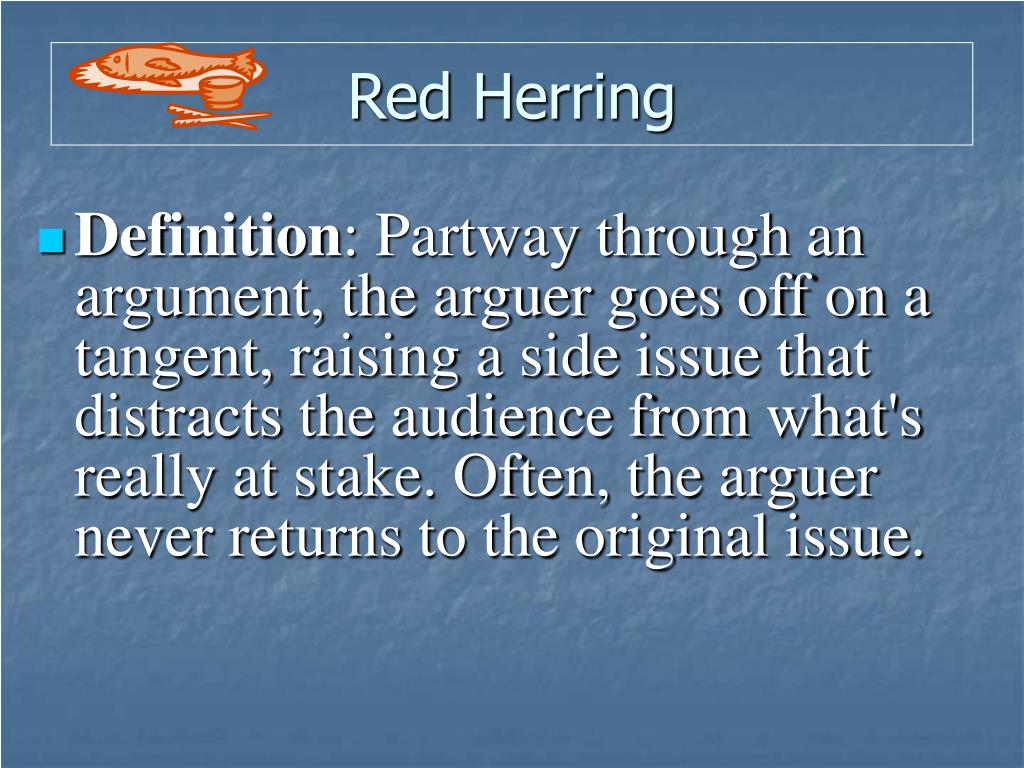

Just think about sending a young child to bed. We first learn this technique at a very young age. They show up in every aspect of human interaction. Red herrings are not just used in literature and debate. Despite these new findings, the concept has worked its way into popular culture and become synonymous with the idea of a false trail. Though this was long accepted as the origin of the term, it’s now thought that smoked herrings were used to train horses for war rather than to train hounds for hunting.

Then, the trainers would drag red herrings perpendicular to the trail of the animal, seeing if the stronger scent would throw the hounds off the trail.

After they had been trained successfully with herrings, the hounds were then used to hunt foxes or badgers.

Young hounds were trained to follow a scent by dragging smoked herrings along the ground and teaching them to trail the smell of the fish. A herring is a fish which, when smoked, becomes reddish and extremely pungent. The red herring fallacy allegedly got its name from a hunting practice, though there are some studies claiming that the attribution is in error. This is an attempt by teachers to test their students’ comprehension and factual discernment. Similarly, a teacher can use this device, putting forth a plausible answer to distract students from the correct one. The red herring distracts the attention of the reader, just as with a legal case or a political debate. The author will set up clues-and a suspect that seemingly fits them-so that the reader is distracted from the actual culprit. It can be found most commonly in mystery fiction. In addition to being a relevance fallacy, a debate tactic and a legal technique, the red herring is also a literary device. It’s extremely difficult to counter a red herring, as even when attempting to shift the focus back to the issue at hand, you may be accused of sidestepping an important issue. If the opponent brings up a highly charged subject, then it can take precedence over the initial topic in the minds of the audience. It works especially well when the debate takes place in front of an audience. The red herring can be one of the most frustrating, and most effective, methods for derailing an argument. It is an attempt by a defense lawyer to distract and confuse the jury rather than to refute the evidence itself. This term is most often used in a legal setting. Finally, and probably a favorite for sci-fi fans, the red herring is also known as the Chewbacca defense. Essentially, it is a case of proving the wrong point. While the red herring as a debate tactic has been described relatively recently, it is a form of ignoratio elenchi, or ignorance of the nature of refutation. It can also be described as a tactic of irrelevant thesis or irrelevant conclusion. In addition to being a form of misdirection and an attempt to bring up a topic that is beside the point, it is also known as clouding the issue, changing the subject, or using false emphasis. The red herring is a tactic that has plenty of names. The red herring is a form of misdirection-a way to put an idea or opinion forth that draws attention away from the actual topic of debate, shifting the conversation to something plausible, but beside the point. In debate terms, it can be seen as a relevance fallacy in that it shifts the focus of the conversation to a subject not relevant to the original point of focus. Essentially, the topic of debate is derailed by a new topic that changes the focus of the argument. The red herring is not actually a logical fallacy, per se.


 0 kommentar(er)
0 kommentar(er)
